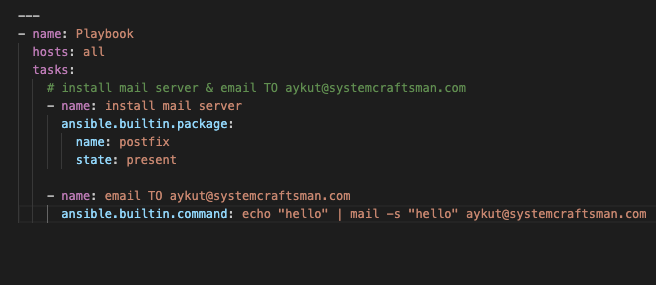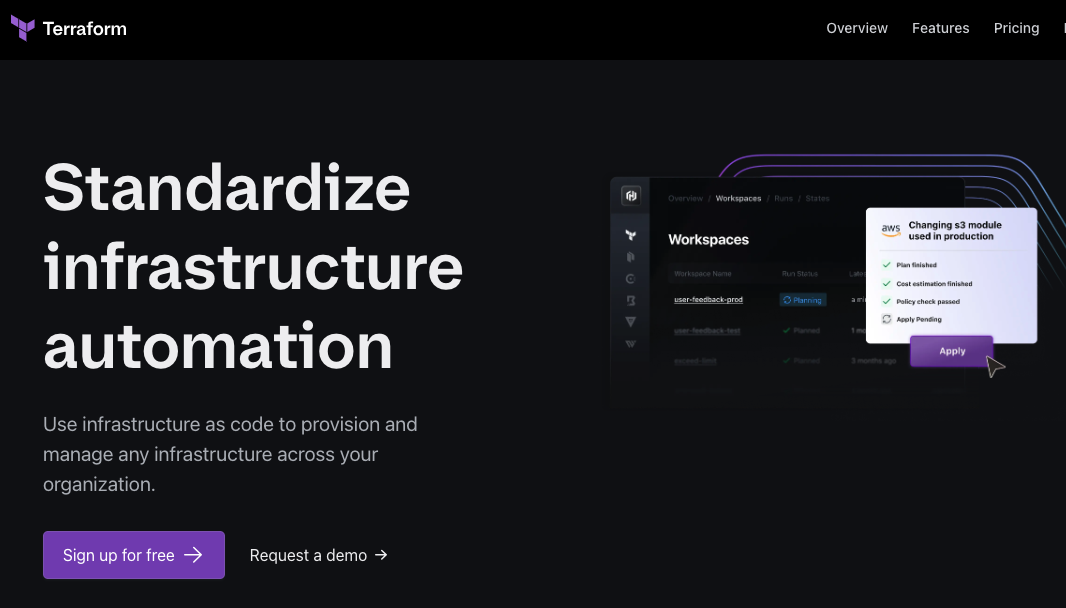
Ansible vs. Terraform: Which IaC Tool Is Right for You?

When you read or hear about DevOps and infrastructure management tools, Ansible and Terraform probably come to mind. Ansible is an open source, command line, declarative – but imperatively executing – automation tool written in Python. Terraform is also an infrastructure tool but used primarily for provisioning and managing infrastructure in any cloud.
Both are powerful Infrastructure as Code (IaC) technologies that serve different purposes and shine in distinct areas. Understanding their strengths and weaknesses and how they can complement each other is the key to making a logical decision on which tool or combination of them is right for your needs.
In this article, you will compare Ansible and Terraform per several concepts as follows:
- Language and syntax
- Configuration approach
- State management
- Ecosystem and integrations
- Performance and scalability
- Community and support
- Pricing and licensing
- Generative AI support
By the end of this article, you will have an understanding of when to use each tool individually and when to combine them toget the best of both worlds by also leaning on the use cases and best-fit scenarios of both technologies.
Ansible vs. Terraform: A Detailed Comparison
In this section, you will compare the two technologies for each concept previously mentioned. Let's start with what language they support and what syntax they suggest using.
Language and Syntax
Ansible's syntax is built on YAML, which is a declarative language that's highly readable and approachable, even for those without extensive programming experience. Ansible's focus on simplicity makes it ideal for quick-start tasks, and it's popular for its human-readable playbooks. The following image shows an example of an Ansible playbook with two simple tasks.

Terraform uses a language called HashiCorp Configuration Language (HCL), which has a more complex, JSON-like structure. While HCL allows for more detailed and powerful infrastructure definitions, it also comes with a steeper learning curve compared to Ansible's YAML-based syntax.
If simplicity and readability are key factors for you, Ansible is clearly a better fit. However, if you want to handle more complex tasks, then Terraform's HCL offers more flexibility.
Configuration Approach
For configuration, Ansible follows a procedural approach, which means it uses a step-by-step process to execute tasks in a specific order. It gives you full control over the sequence of operations; for example, you can apply conditional logic or follow a specific workflow based on the current system state.
Terraform, on the other hand, takes a declarative approach. You define the desired state of your infrastructure, and Terraform automatically figures out the steps required to achieve that state. This method is particularly powerful when you are provisioning complex cloud environments from scratch.
The procedural approach of Ansible gives you more control over each action, while Terraform's declarative nature is more efficient for large-scale automated infrastructure setups. This is one of the areas where you could leverage both Terraform and Ansible in the same system. For example, you can use Terraform to create a multi-tier cloud architecture with many virtual machines and Ansible to install particular software on those machines.
State Management
Ansible is stateless by design, so it doesn't keep a record of the system's current state. While this can simplify some workflows, it makes change tracking more challenging. You might need external tools or additional practices to store and manage your infrastructure's state changes. For example, you might need to use a Git version control system or Ansible Tower (or AWX as the upstream).
Terraform maintains a state file, which keeps track of the current state of your infrastructure. This state file is important for managing changes and ensuring that the infrastructure remains consistent with the declared configuration. The image below shows part of a state file created by Terraform.

You should use Terraform rather than Ansible for scenarios like managing states or tracking changes over time. Terraform can achieve this out of the box, while Ansible might require additional tools (such as Tower and AWX) for state management.
Ecosystem and Integrations
Ansible has a huge ecosystem with an extensive collection of modules that support a wide range of platforms and systems. It's particularly strong in configuration management and can be used to automate almost any IT process, from server provisioning to application deployment.
On the other hand, Terraform has a strong provider ecosystem, allowing it to interact seamlessly with many cloud and infrastructure services. This makes it a popular choice for managing cloud resources across providers like AWS, GCP, and Azure.
Both technologies excel in terms of their integrations and ecosystems. However, Ansible leans more toward configuration management, while Terraform shines in cloud infrastructure provisioning.
Performance and Scalability
Ansible is tailored for managing configurations across multiple servers simultaneously. Its high efficiency and scalability make it ideal for system configuration, application deployment, and orchestration tasks.
In contrast, Terraform is designed to handle large-scale infrastructure deployments. Whether you're provisioning hundreds of virtual machines or setting up complex networks across multiple regions, Terraform's architecture is optimized for scalability.
Both tools are high performers, but Ansible shines in configuration tasks, while Terraform is better suited for large-scale cloud infrastructure management.
Community and Support
Ansible has a large, active community with extensive documentation and a wealth of third-party resources. Its support has grown even stronger since its acquisition by Red Hat, which offers enterprise-level support via Ansible Automation Platform (AAP).

Terraform's community has also been growing rapidly, endorsed by strong backing from HashiCorp and leading cloud providers. The enterprise version of Terraform comes with advanced features and premium support.

While Ansible's community is larger, both tools have strong communities and support systems. Whether you opt for the open source version or enterprise features, both Ansible and Terraform are backed by solid ecosystems.
Pricing and Licensing
Ansible is open source and free to use, with much of its functionality available through the Ansible open source project. However, enterprise support and advanced features are available through a paid subscription to the AAP. While many subprojects within Ansible are open source and their upstream code can be found on GitHub, AAP includes additional proprietary tools for scaling, managing, and automating at an enterprise level.
Similarly, Terraform is open source with a free core version, but HashiCorp offers paid enterprise versions that include additional features like collaboration tools, governance, and advanced security options. Terraform also has cloud offerings under the Terraform Cloud and Terraform Enterprise products, providing further scalability and support for enterprise environments.
From a pricing perspective, both tools follow a similar model. For Ansible, while all the functionality remains open source, support requires a subscription to the Ansible Automation Platform. Terraform, on the other hand, offers a free version for basic use, with paid tiers that unlock advanced enterprise functionalities.
Generative AI Support
Ansible recently introduced Ansible Lightspeed, an AI-powered code-generation tool that assists users in writing playbooks and automating workflows. The upstream project, Ansible AI Connect, leverages generative AI to offer real-time recommendations, streamline task creation, and reduce the time spent on playbook development. This integration provides users with contextually relevant suggestions, helping automate even complex infrastructure tasks more efficiently.
As of now, Terraform does not offer native generative AI capabilities. While it can integrate with external AI and machine learning services provided by cloud platforms, there is no built-in AI tool to assist in writing or optimizing Terraform configurations.
Ansible, with its Ansible AI Connect project, is ahead in terms of generative AI support, offering AI-powered recommendations to simplify and enhance automation workflows. Terraform lacks native generative AI capabilities but can still be integrated with third-party AI tools.
Use Cases and Best-Fit Scenarios
Choosing between Ansible and Terraform depends heavily on the specific requirements of your infrastructure and operational goals. Both tools shine in different areas, and understanding these strengths will help determine which tool is the best fit for your use case.
Ansible: Ideal for Configuration Management and Application Deployment
Ansible is strong in scenarios where configuration management, application deployment, and orchestration are the primary focus. If your infrastructure requires constant updates or configuration changes across many servers, Ansible's procedural approach makes it easy to roll out specific tasks step-by-step, ensuring uniformity across multiple environments.
For companies that manage a group of servers and need to configure software continuously, install packages, update services, or manage file systems, Ansible's ease of use and flexibility make it the ideal choice. You can develop detailed tasks, such as updating web server configurations or deploying application code, and roll them out to hundreds of machines at once.
Ansible is the better choice for:
- automating repetitive tasks, like installing software, updating configurations, or managing user accounts across a large group of servers;
- coordinating multitier orchestration for application deployment; and
- managing a diverse set of operating systems and applications in an environment where infrastructure changes frequently.
Terraform: Best Suited for Cloud Infrastructure Provisioning
Terraform is highly effective for provisioning, managing, and scaling cloud infrastructure for multiple providers. With its declarative approach, Terraform is best suited for managing the lifecycle of infrastructure, especially in cloud environments. You can define your entire cloud infrastructure – networks, virtual machines, databases, and load balancers – as code, making it easy to version, track, and manage changes over time.
If you're building a new cloud environment from scratch, you'll benefit from Terraform's ability to provision infrastructure across different cloud platforms such as AWS, Azure, and Google Cloud. By defining the desired state of the infrastructure, Terraform ensures that all resources are created in the most efficient and performant way possible.
Terraform is the better choice for:
- provisioning infrastructure across multiple cloud providers, such as creating networks, virtual machines, or storage;
- managing cloud infrastructure that needs to be tracked, scaled, and versioned over time; and
- setting up highly available scalable infrastructure (*eg* load balancers, autoscaling groups, and databases).
Combining Ansible and Terraform
In many real-world scenarios, using Ansible and Terraform together can lead to more comprehensive and effective infrastructure management. While Terraform is great for setting up infrastructure, Ansible is tailored for configuring and managing the applications on top of that infrastructure. Therefore, if you leverage Terraform for provisioning and Ansible for post-provisioning configuration, you can build a powerful and flexible system.
Combining Ansible and Terraform makes sense for:
- provisioning infrastructure using Terraform, followed by configuring software, deploying applications and middleware, and managing services with Ansible;
- scaling or modifying existing cloud environments by using Terraform and then updating configurations or managing services across those environments by using Ansible; and
- managing both infrastructure and configuration as code, allowing for a complete end-to-end DevOps workflow that is both scalable and manageable.
Overview
Here's a table that summarizes the comparison of the two tools:
Conclusion
Both Ansible and Terraform are highly capable tools, but they are built for different purposes. Ansible is tailored for configuration management and orchestration, while Terraform focuses on infrastructure provisioning. However, when combined, these tools can offer a comprehensive solution to handle both infrastructure and configuration tasks seamlessly.
Whether you are managing cloud resources, configuring servers or Kubernetes instances, or automating application or middleware deployment, understanding the strengths and use cases of each tool will allow you to build a more efficient and solid DevOps pipeline.
If you're working with cloud technologies like Kubernetes, mogenius offers a platform designed to efficiently support your Kubernetes workflows. It simplifies tasks from development to deployment, providing a straightforward and manageable experience.

FAQ
Interesting Reads
The latest on DevOps and Platform
Engineering trends
Subscribe to our newsletter and stay on top of the latest developments



.avif)
